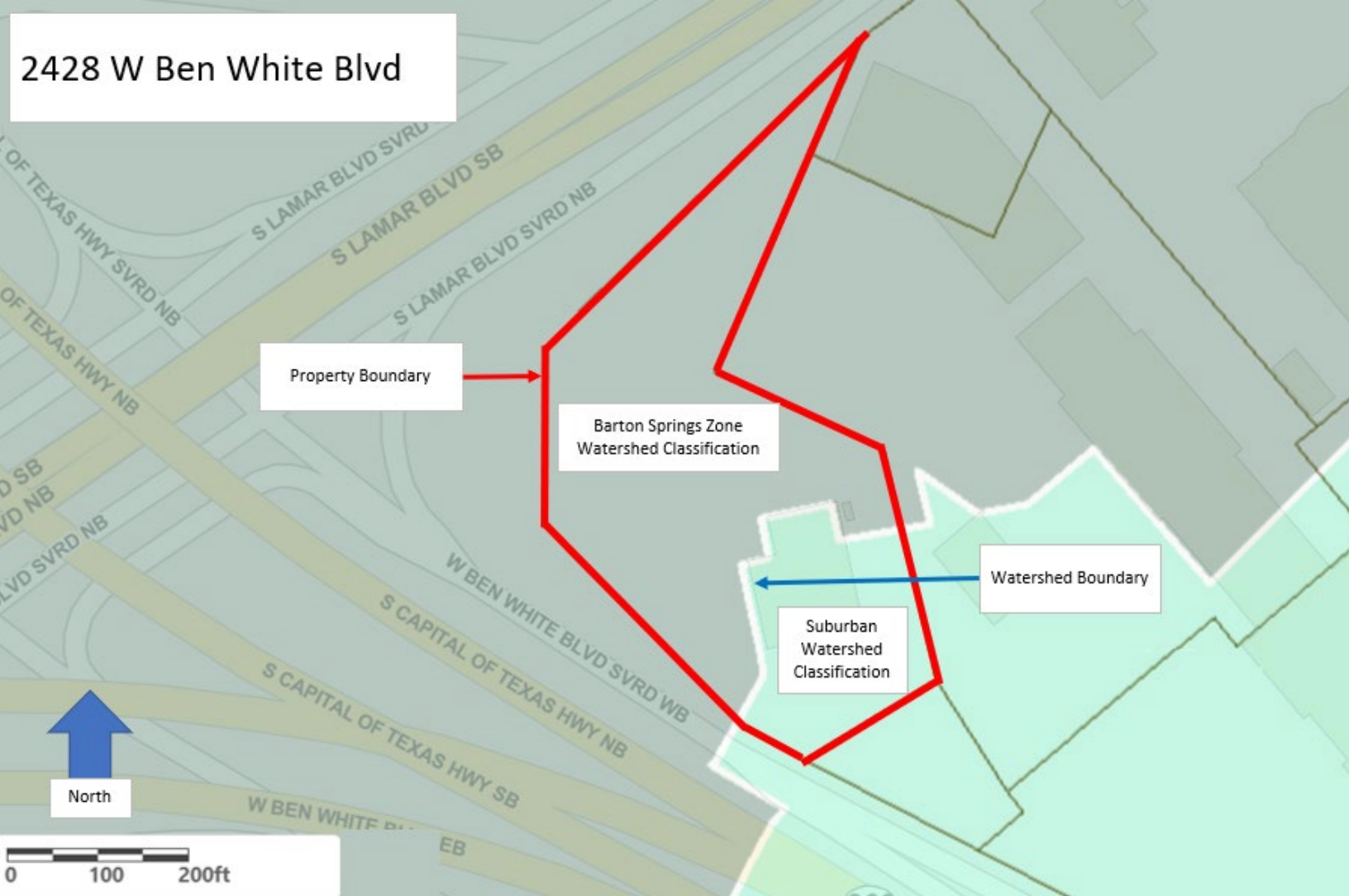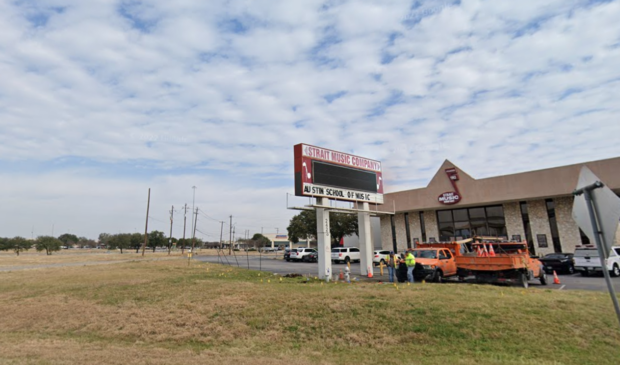Planning Commission reverses interpretation of environmental rules, allowing housing project to advance
Monday, May 15, 2023 by
Jonathan Lee The Planning Commission on Tuesday overruled an interpretation of environmental rules by city staffers, allowing a multifamily project to move forward at the intersection of Ben White and South Lamar boulevards.
At issue was a disagreement over how a combination of city environmental protection rules apply to a site at 2428 W. Ben White Blvd., where CSW Development plans a 319-unit multifamily project.
Since both the Barton Creek and Williamson Creek watersheds intersect the site, staffers argued that the project must meet the water quality requirements for each watershed on the parts of the site where those rules apply.
The applicant, on the other hand, argued that the entire site should only have to meet the more restrictive rules that apply to Barton Creek. That’s because the project would improve environmental conditions on the site overall by lowering impervious cover and providing robust water quality infrastructure, even though it would add impervious cover to the Barton Creek watershed, running afoul of watershed protection rules there if they’re not applied projectwide.

A map by city staffers illustrates how different watersheds intersect the site (shown in red).
On top of the disagreement around what city code says, both parties on Tuesday shared differing accounts of when staffers informed the applicant of their interpretation.
Steve Drenner, representing the developer, said the project has been stuck in site plan review for 20 months. By his account, staffers had changed how they interpreted the particular section of city code months after review began. “The frustration level is high,” Drenner said.
But staffers said they have been clear from the beginning: Both watershed protection rules apply. They also said that the developer could ask for a site-specific amendment to the Save Our Springs Ordinance to build their project as is or with very minor modifications. “We’re unclear about why the applicant has not explored that,” Environmental Protection Officer Katie Coyne said.
Drenner implied that an SOS amendment was a last resort. “Given the clear language in the code, we should not be forced to go down that route,” he said.
Drenner added that tweaking plans to lower the impervious cover on the Barton Creek side also isn’t an option: Beyond costing another $2.5 million to redo architectural plans, the project would likely lose 100 units. In addition, interest rates have doubled since the project has been under review by the city, so it would not be viable.
As proposed, the project would bring 319 multifamily units – 32 of which would be affordable to those making 60 percent of the median family income. It would be built on the former Strait Music Company building site as well as on right of way vacated by the Texas Department of Transportation.
Following a lengthy discussion, the commission voted 8-4 in favor of the applicant, allowing the project to move forward. Chair Todd Shaw and commissioners Nadia Barrera-Ramirez, Grayson Cox and Jennifer Mushtaler voted against.
“I hate to say that the code is very clear that this is a site, and … impervious cover requirements apply to the full site, not parts of it based on watershed requirements,” said Commissioner Awais Azhar, who made the motion to overrule staffers’ interpretation.
Those against the motion worried how overruling staff could allow other properties in similar situations to build more impervious cover and degrade the city’s watersheds. “I think this is a very dangerous precedent,” Mushtaler said.
Azhar said he hoped the city could work to further clarify the code so the commission’s decision does not have unintended consequences for other sites.
Others focused on the impact of the city’s complicated development regulations on housing supply.
“What we are witnessing right now is exactly the graveyard where so much of Austin’s housing goes to die,” Commissioner João Paulo Connolly said. “Because this is death by a thousand cuts.”
The Austin Monitor’s work is made possible by donations from the community. Though our reporting covers donors from time to time, we are careful to keep business and editorial efforts separate while maintaining transparency. A complete list of donors is available here, and our code of ethics is explained here.
You're a community leader
And we’re honored you look to us for serious, in-depth news. You know a strong community needs local and dedicated watchdog reporting. We’re here for you and that won’t change. Now will you take the powerful next step and support our nonprofit news organization?





